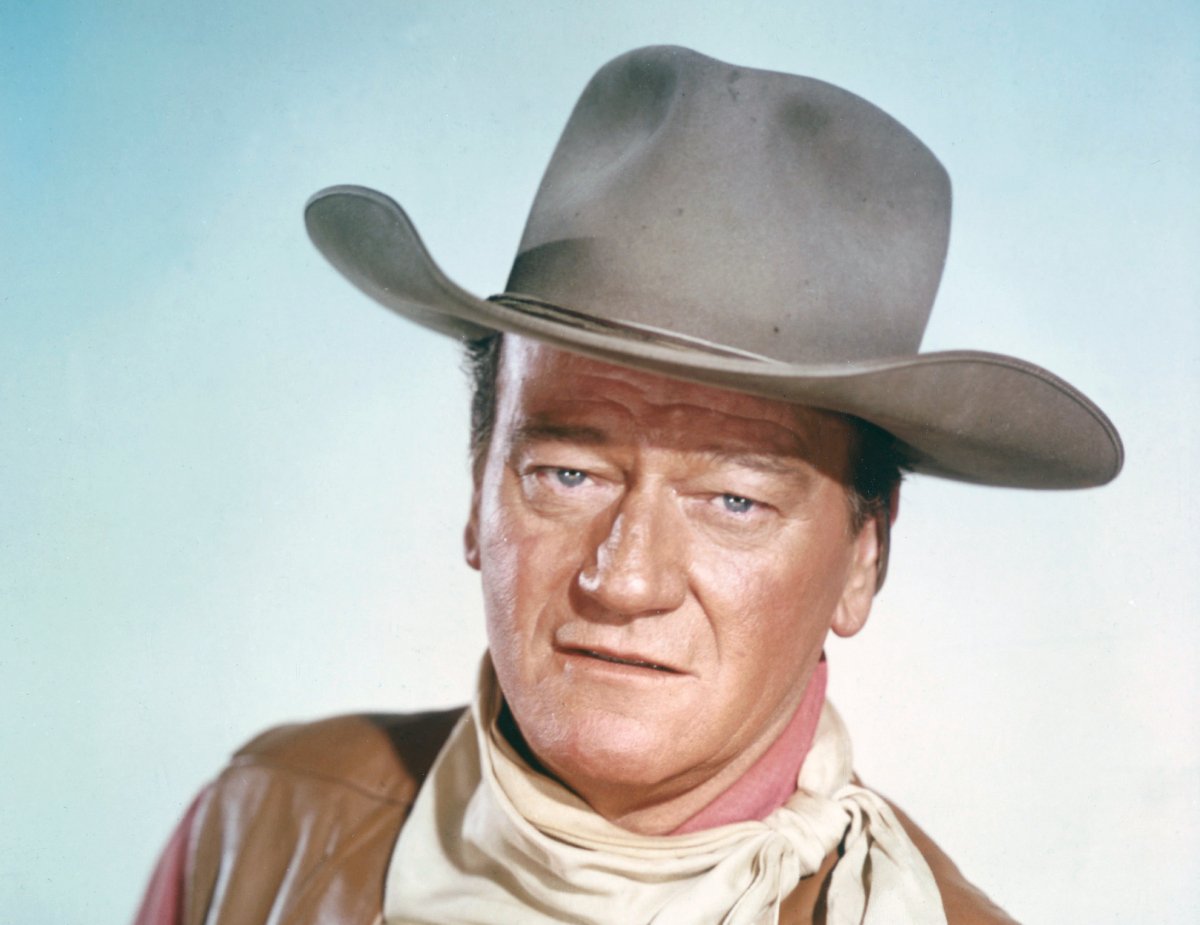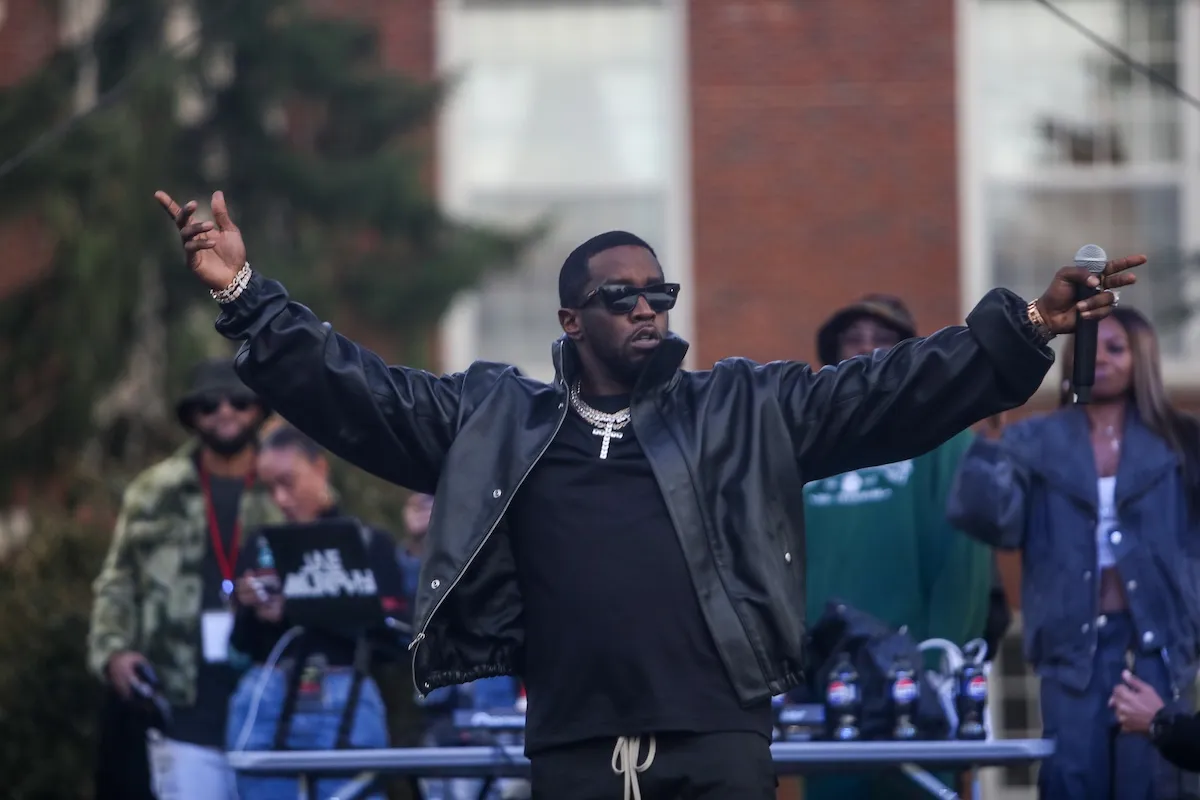
John Wayne Wore a Hairpiece and 9 Other Interesting Facts About ‘The Duke’
John Wayne was one of the most popular leading men of Hollywood’s Golden Age. Thanks to his westerns and war films, the Academy Award winner known as “The Duke” was among the film industry’s top box office draws for a whopping three decades.
In 1939, his career took off when he starred in John Ford’s Stagecoach. Altogether, he appeared in 176 motion pictures — including 83 westerns where he “played cowboys, cavalrymen, and unbeatable loners,” per his biographer Ronald Davis. But, did you know that in most of those films Wayne wore a hairpiece due to thinning hair? Here are nine more interesting facts about the actor known as “The Duke.”

1. John Wayne wasn’t his real name
Wayne was born Marion Robert Morrison on May 26, 1907, in Winterset, Iowa. When he was a child, his family moved to Glendale, California. That’s where Wayne played high school football, and was recruited by the University of Southern California. However, he lost his scholarship due to a body surfing injury.
This led to Wayne quitting school and looking for work in the film industry, and he landed his first job as a propman, laborer, and extra at Fox Film Corporation. This is where he developed his friendship with Ford, who started casting Wayne in minor roles of small films beginning with 1928’s Four Sons. His first leading role was in 1930’s The Big Trail.
2. The name ‘Duke’ came from his dog
The ultra-masculine Wayne was not a fan of his feminine-sounding given name of Marion Morrison because kids gave him a hard time about it growing up. So, he decided to change his name when he became an actor and adopted the name of his dog “Duke.”
The dog was known as “big Duke” and Wayne was “small Duke.” Before he was given the name of John Wayne in 1930 by The Big Trail director Raoul Walsh, he used the name Duke Morrison in his earlier films.
3. He was a lifelong chess enthusiast
When Wayne was in-between filming scenes, he would often spend time playing chess on the miniature board that he brought with him to the set. His star-studded list of chess opponents included Rock Hudson, Marlene Dietrich, and Robert Mitchum.
When Wayne would accompany his wife, Pilar Pallete, to play amateur tennis, his trailer was always stocked with a chess set. The actor would challenge fans to play against him by putting a sign on the trailer that read, “Do you want to play chess with John Wayne?”
4. John Wayne was fluent in Spanish
The most popular American cowboy in mid-century Hollywood films was fluent in Spanish, and all three of his wives were of Latin descent. Wayne’s wives were Josephine Alicia Saenz, Esperanza Baur, and Pallete. Wayne and Saenz shared four children, and he and Pallete had three children.
A few of Wayne’s seven children actually entered the film and television industry, with his son Ethan billed as John Ethan Wayne in a handful of films and as the lead in the 1990s reboot of the Adam-12 TV series.
5. His last public appearance was at the Academy Awards
Wayne won a single Oscar during his prolific career — Best Actor in 1970 for his portrayal of U.S. Marshal Rooster Cogburn in True Grit. At the time, the award was considered long overdue because the Academy had not yet recognized him during his decades-long career.
He didn’t get a nomination for his performance in Stagecoach, he was snubbed in 1948 when he starred in Red River. And, he was basically robbed of an Oscar when he was completely ignored for his performance in The Searchers in 1956 — one of the greatest westerns ever made.
Ironically, his last public appearance was at the 51st Academy Awards in April 1979 — two months before his death — when he handed out the award for Best Picture to The Deer Hunter.
6. He was awarded two medals posthumously
On Wayne’s 72nd birthday — May 26, 1979 — congress sent President Jimmy Carter legislation to have the actor awarded with a Congressional Gold Medal. Those who testified to Congress in support of the award included Frank Sinatra, Elizabeth Taylor, Katherine Hepburn, Gregory Peck, and Kirk Douglas.
Because Wayne died just two weeks later, he was awarded the medal posthumously. The following year, President Carter awarded him the Presidential Medal of Freedom — America’s highest civilian honor. Wayne is one of just a handful of people who’ve won both medals.
7. There are a lot of places named after John Wayne
Wayne’s legacy is evident throughout the United States because various public locations are named in his honor. There’s the John Wayne Airport in Orange County, California, that features a nine-foot bronze statue of the actor at the entrance.
The John Wayne Elementary School, aka P.S. 380, is located in Brooklyn, New York. It has a 38-foot mosaic mural titled “John Wayne and the American Frontier.” There’s also the John Wayne Marina near Sequim, Washington, and John Wayne Parkway (Route 347) that runs through the center of Maricopa, Arizona.
A larger-than-life-size bronze statue of Wayne sitting on a horse sits at the corner of La Cienega and Wilshire Boulevard in Beverly Hills, in front of the former offices of the Great Western Savings and Loan Corporation. Wayne starred in a number of the bank’s commercials in the 1970s.
8. He broke three ribs while filming ‘The Undefeated’
While filming The Undefeated in 1969, Wayne fell off a horse and suffered three broken ribs and a torn ligament in his shoulder. Despite the intense pain and not being able to efficiently use the arm, Wayne insisted he continue working so he wouldn’t disappoint his fans. So, director Andrew McLaglen had to film the actor from a certain angle throughout the entire film to hide his injuries on screen.
Another fun fact, per Need Some Fun, Wayne wasn’t a big fan of riding horses even though he spent a number of films sitting in a saddle.
9. John Wayne coined the term ‘the Big C’
Wayne was one of the heaviest smokers in Hollywood, and for years he smoked five to six packs of unfiltered Camels per day. In 1964, he was diagnosed with lung cancer and had surgery to remove his entire left lung and four ribs.
His colleagues begged him to keep his illness quiet because they thought it would prevent him from getting work. But, Wayne decided to publicly announce he had cancer and encouraged his fans to get preventative exams. He was actually credited with coining the term “the Big C.”
Five years later, Wayne was declared cancer-free. However, he eventually died of stomach cancer at UCLA Medical Center on June 11, 1979.


